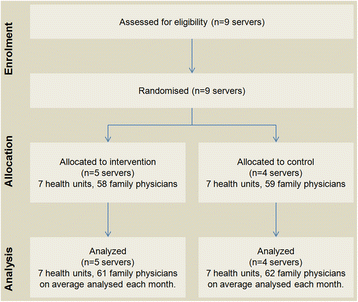Difference between revisions of "Template:Article of the week"
Shawndouglas (talk | contribs) (Updated article of the week text.) |
Shawndouglas (talk | contribs) m (Image) |
||
| Line 1: | Line 1: | ||
<div style="float: left; margin: 0.5em 0.9em 0.4em 0em;">[[File: | <div style="float: left; margin: 0.5em 0.9em 0.4em 0em;">[[File:Fig3 Martins BMCMedInfoDecMak2017 17-1.gif|240px]]</div> | ||
'''"[[Journal:The effect of a test ordering software intervention on the prescription of unnecessary laboratory tests - A randomized controlled trial|The effect of a test ordering software intervention on the prescription of unnecessary laboratory tests - A randomized controlled trial]]"''' | '''"[[Journal:The effect of a test ordering software intervention on the prescription of unnecessary laboratory tests - A randomized controlled trial|The effect of a test ordering software intervention on the prescription of unnecessary laboratory tests - A randomized controlled trial]]"''' | ||
The way [[electronic health record]] and [[Computerized physician order entry|laboratory test ordering system]] software is designed may influence physicians’ prescription. A randomized controlled trial was performed to measure the impact of a diagnostic and laboratory tests ordering system software modification. | The way [[electronic health record]] and [[Computerized physician order entry|laboratory test ordering system]] software is designed may influence physicians’ prescription. A randomized controlled trial was performed to measure the impact of a diagnostic and laboratory tests ordering system software modification. | ||
Revision as of 20:06, 5 June 2017
"The effect of a test ordering software intervention on the prescription of unnecessary laboratory tests - A randomized controlled trial" The way electronic health record and laboratory test ordering system software is designed may influence physicians’ prescription. A randomized controlled trial was performed to measure the impact of a diagnostic and laboratory tests ordering system software modification.
Participants were family physicians working and prescribing diagnostic and laboratory tests. The intervention group had modified software with basic shortcut menu changes, where some tests were withdrawn or added, and with the implementation of an evidence-based clinical decision support system based on United States Preventive Services Task Force (USPSTF) recommendations. This intervention group was compared with typically used software (control group).
The outcomes were the number of tests prescribed from those: withdrawn from the basic menu; added to the basic menu; marked with green dots (USPSTF’s grade A and B); and marked with red dots (USPSTF’s grade D). (Full article...)
Recently featured:










